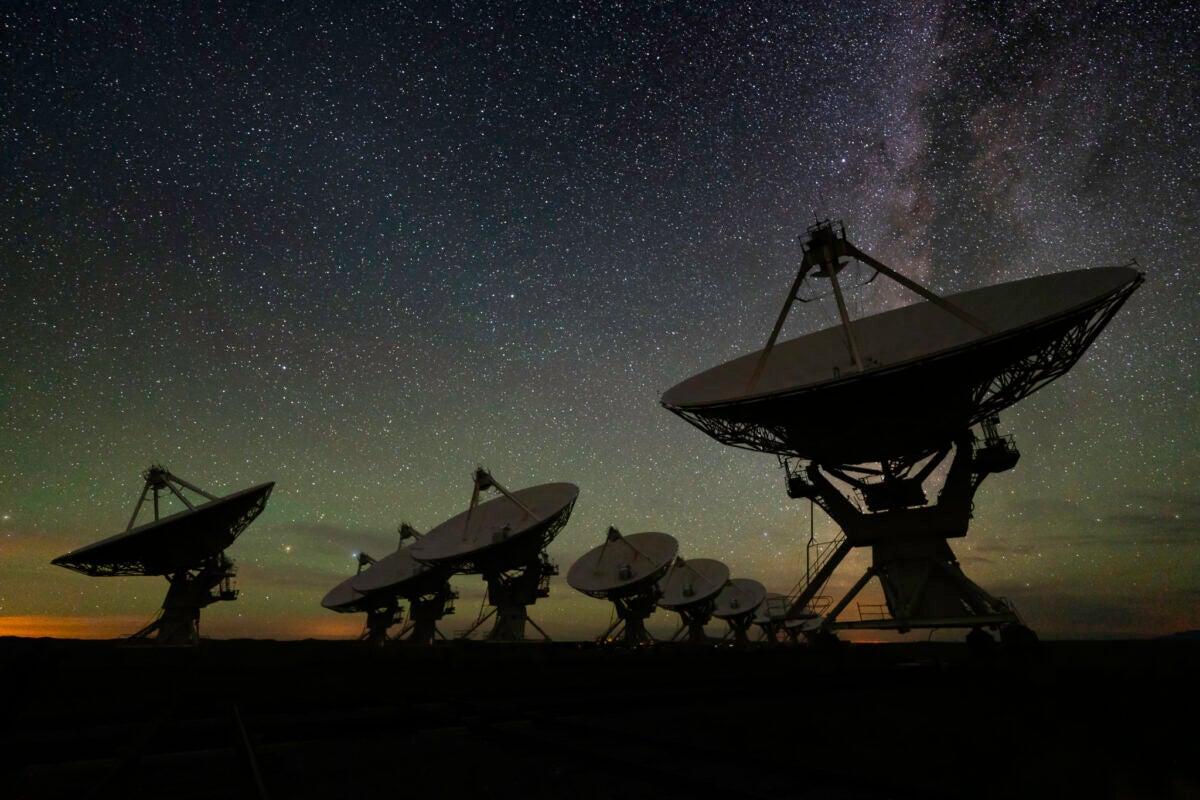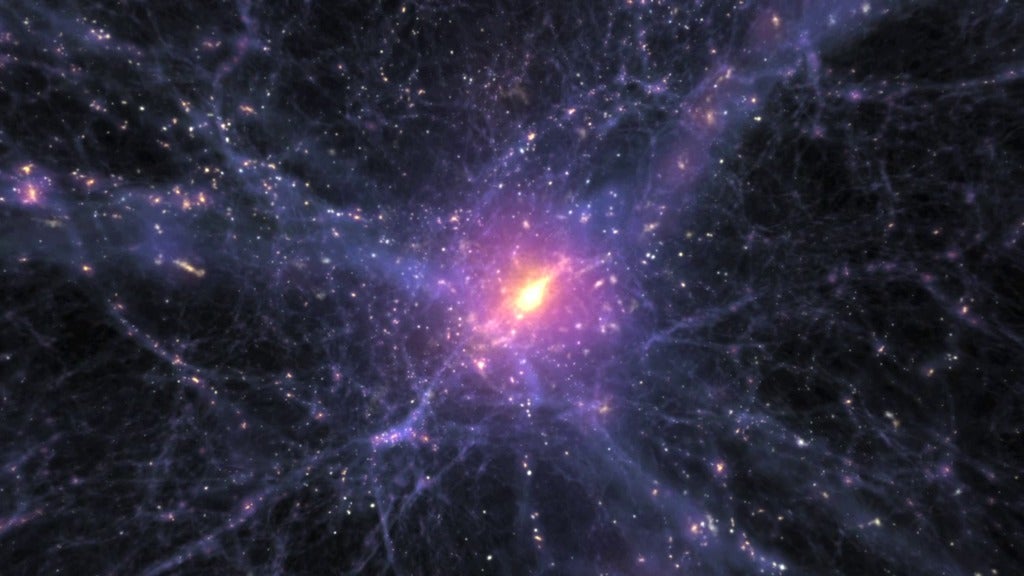What does dark energy have to do with proliferation of life in the universe? The answer is written in the stars, according to new research.

Radio dishes of the Very Large Array sit under the New Mexican sky. Credit: Jeff Hellerman, NRAO/AUI/NSF
In the 1960s, celebrated radio astronomer Frank Drake proposed his eponymous equation, which attempted to wrangle with the probability of finding extraterrestrial life — at least, the kind that we could identify through radio broadcasts — somewhere out there in the universe. One of the key parameters of that formulation is the rate of star formation. More stars equals more planets equals more chances for life as we know it.
Astronomers have spent decades building up a precise profile of the star formation history of the universe, estimating how much available matter gets converted into stars throughout every epoch of cosmic history. Among other reasons, they study this because the star formation rate is sensitive to a host of cosmological and astrophysical parameters. Change anything about the universe, and you end up with different assembly histories of galaxies and different efficiencies of star formation.
In fact, the rate of star formation in our universe reached its peak well over 10 billion years ago. The cosmos has been making stars since then, but at an ever decreasing rate. Someday, about 100 trillion years from now, the last lights will go out. One of the major factors impacting this timescale is dark energy, the mysterious force that is causing the expansion of the universe to accelerate.
Accelerated expansion is devastating for star formation. As galaxies drift further apart, they have fewer opportunities to interact and accrete new material. This prevents new gas from entering galaxies and converting into stars, and locks up the existing gas into warm interstellar reservoirs, where they too don’t get to participate in star formation.
But what if dark energy were different? Would star formation change much, if at all? And conversely, how would that impact the likelihood of life appearing? In other words, is our value of dark energy — roughly 70 percent of the total energy budget of the universe — a typical value?
Daniele Sorini of Durham University’s Institute for Computational Cosmology led a new paper digging into that question. She said in a press release, “Understanding dark energy and the impact on our universe is one of the biggest challenges in cosmology and fundamental physics. The parameters that govern our Universe, including the density of dark energy, could explain our own existence.”

But the results were not what they expected. They found that star formation was roughly similar for a broad range of values of dark energy, including values significantly higher than what we see in our universe.
“Surprisingly, though, we found that even a significantly higher dark energy density would still be compatible with life, suggesting we may not live in the most likely of universes,” said Sorini.
For our value of dark energy, roughly only 23 percent of all the available matter in the cosmos will eventually turn into stars over its entire lifetime. As expected, weaker forms of dark energy lead to more efficient star formation rates, but not much: they found that the maximum efficiency possible is 27 percent.
They also found that values of dark energy a hundred times greater than our own would still convert 5 percent of available mass into stars. This is more than enough for multiple generations of star formation, which means more than enough material to build planets and even life.
If we assume that our universe is part of a multiverse, with each individual cosmos getting its own randomly-selected value for dark energy, then our particular value is highly unlikely. The vast majority of intelligent observers (assuming that any universe that forms a sufficient number of stars eventually gives rise to life) would live in a universe with much higher dark energy.
This research suggests that the strength of dark energy that we observe may be somewhat unnatural, in a certain sense.
Professor Lucas Lombriser of the University of Geneva in Switzerland and co-author of the study explained, “It will be exciting to employ the model to explore the emergence of life across different universes and see whether some fundamental questions we ask ourselves about our own Universe must be reinterpreted.”

